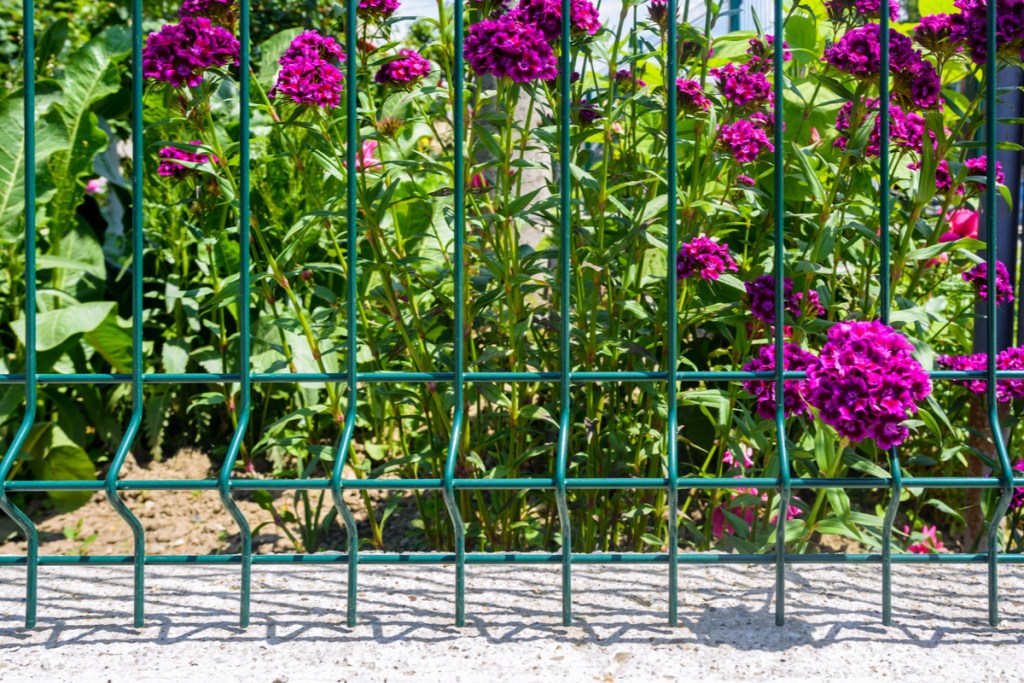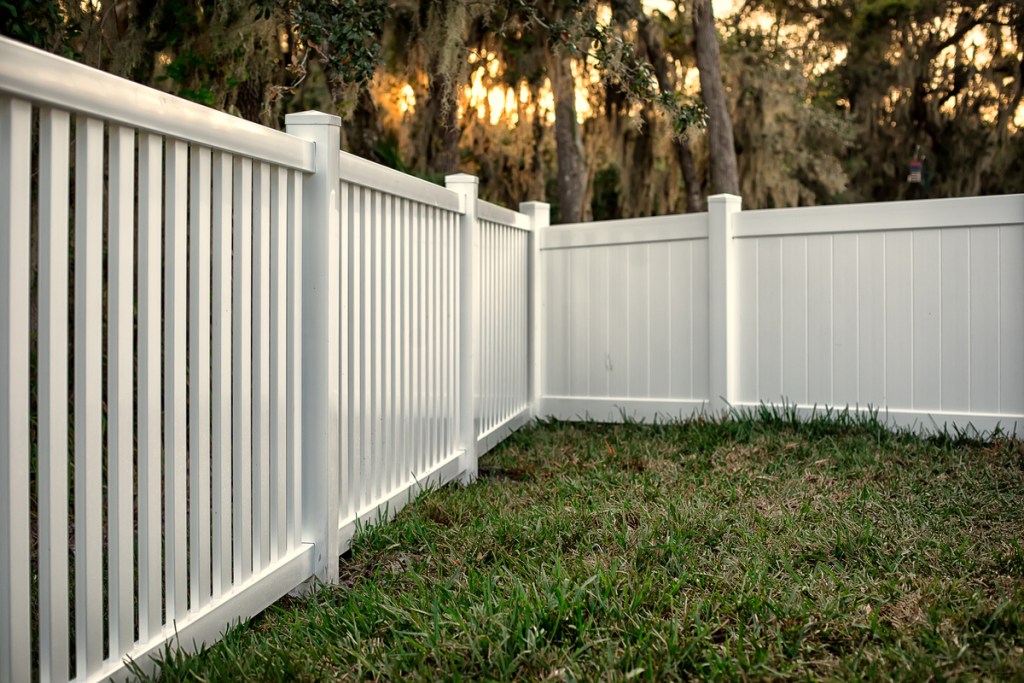Do critters keep getting into your garden? Do your plants keep escaping the confines of their beds? Does your yard feel a little flat, like it needs something to break up the space? If the answer to any of these questions is yes, then you may need a fence. Which fence is right for you, though? Metal and plastic fences both have benefits and drawbacks, which we’ll lay out for you so you have all the information you need to choose the best fence for your garden.

Metal fencing
Metal fences come in a variety of styles. From chain-link to wrought iron to smaller, more decorative borders, metal fencing can pair with almost any aesthetic. But, does metal fencing have more benefits to offer?
Durability
Metal fencing gets a high score in durability, being one of the most durable fencing materials readily available to gardeners. Depending on the type of metal, the type of protection or finish, as well as weather conditions, metal fencing can last decades. Metal is difficult to damage, making it a great option for houses with rambunctious children or pets, and scratches can be buffed out or painted over. However, the trade off is that metal fences can be more difficult to repair if they’re damaged. Additionally, their sturdy nature can make them somewhat challenging to move.
Cost
Metal fences, due to the variety of styles available, have a wide range of prices. Fences with thinner poles, wider spacing, or cheaper metal can be relatively inexpensive, while thicker, more ornate fences can go for $100 or more. This could make it challenging to find the specific style you want within your budget. If you have a smaller area to fence, it may not be an issue. However, if you’re looking to fence a large garden on a tight budget, metal fencing may not be the best option.
Environmental impact
Metal fencing won’t have any immediate impact on your garden or surrounding area, especially if it is properly sealed against rust. Metal production does take a substantial amount of energy, which isn’t good for the environment. However, since metal is recyclable and reusable, when combined with its long life span it’s a more environmentally friendly form of fencing. For the lowest possible environmental impact, check with your local thrift or secondhand shops and yard sales to see if there’s a used fence you can get rather than purchasing a new one.
In terms of the fence’s impact on your garden specifically, it depends on the style you choose. Many garden fiends can squeeze through medium or larger gaps in fences, and deer can easily leap over low fences. If your fence has small gaps and is tall, then a metal fence will work just fine for pest control.

Plastic fencing
Plastic fencing, by comparison, has a less elegant reputation. Does this mean it’s the lesser choice or that it doesn’t have as much to offer as metal fencing? Here are the facts.
Durability
Plastic has a moderate durability. It isn’t as long lasting as metal, to be sure, but it can still last quite awhile if properly maintained. Depending on the type of plastic used, some fences can actually be quite flexible, making them less likely to break than hard plastic fences. However, harsh weather may still cause damage. Small repairs can often be done at home; and, in the case of more extreme damage, plastic fences are easy to replace.
Cost
Plastic fencing is typically more economical than metal fencing, although some hardier plastic fences are more expensive than wooden ones. Plastic fences are also less expensive in terms of the energy used to install them. They’re lighter weight than metal fencing, making them much less difficult to put up or take down.
Environmental impact
Plastic production is, in general, not good for the environment. However, with the increasing trend toward sustainability, there are fences made from recycled plastic. These are much more environmentally friendly than a traditional plastic fence, so even the most eco-conscious gardeners can feel good about their fencing. Once the fence is damaged beyond use, it can be recycled again.
In terms of effect on your garden, it once again is a question of style. However, it is more common to see plastic fences with no gaps than it is to see metal fences without gaps — making plastic fences the better option for pest control.
If you’re looking for a more permanent fence, one that you don’t intend to move and will last a long time, and price isn’t too much of an issue, then metal fencing may be the fence for you. For a fence that is easier to move, less expensive to procure, and generally better at pest control, then the plastic fence is what we recommend. Ultimately, the choice is yours. Good luck with your fence hunt!



